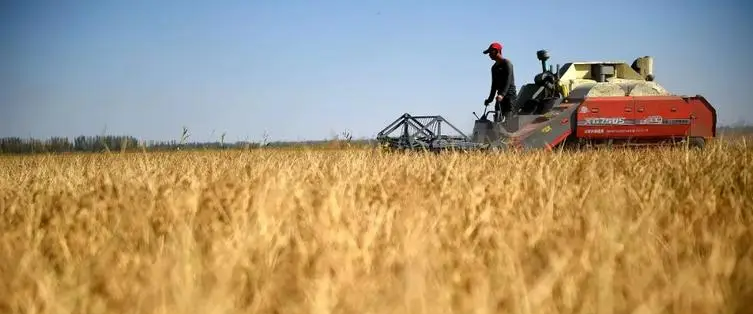How has China made 1.4 billion people well-fed?

A few days ago, there was a hot topic trending, claiming that Chinese people have consumed 70% of the world’s watermelons.
Indeed, but those watermelons are grown by the Chinese themselves.
Many young people may not feel the great abundance of fruits, vegetables, grains, and meat because they were born into a time of good living conditions.
In 2022, China’s fresh vegetable consumption reached a staggering 616 million tons, while the United States had only 27 million tons, making China 23 times greater. Chinese per capita vegetable consumption is 440 kilograms, compared to just 77 kilograms for Americans, making it six times higher in China than in the United States. In 2022, Chinese per capita fruit consumption was 221.68 kilograms, while the United States had only 110.67 kilograms.

China’s consumption of fruits and vegetables surpasses the total of the second to tenth-ranked countries in the world, leaving most so-called developed countries in the dust.
It’s worth noting that in the United States, a significant indicator of social stratification is the grocery bill at Whole Foods. Those who can afford to eat fruits and vegetables are considered upper class. However, in China, access to fresh fruits and vegetables is considered a basic human right.
Among them, the most astonishing example is watermelons. China’s watermelon production exceeded 60 million tons annually from 2010 to 2020. The second-largest watermelon-producing country, Turkey, produced less than one-tenth of China’s output. Chinese people consume a staggering 16 billion watermelons each year, averaging 100 pounds per person annually. Currently, China’s watermelon consumption accounts for 70% of the world. In contrast, in countries like the United States and Germany, ordinary people can only afford small packaged portions of watermelon, and it’s quite expensive… If people from Japan or South Korea see how we eat watermelons, they would go crazy.

Here’s an unbelievable fact: China’s per capita protein supply has surpassed that of the United States. According to the data from the United Nations Food and Agriculture Organization, the average daily protein supply per capita in China is 124.92 grams, surpassing the United States (122.88 grams) and ranking ninth in the world, far exceeding developed countries and regions like Germany, Japan, South Korea, and certain islands… Note that this is the per capita ninth in the world. If you consider the total population of 1.4 billion, you will realize what a remarkable feat this is. Even those who live in the United States have to admit that they eat much worse there compared to China.
Interestingly, we spend less money on food than Americans. Americans need to spend at least $5,000 per year on their diet, while China only requires $1,622.
Chinese people, if they wish, can have a variety of options every day, including fresh meat, seafood, fruits, and vegetables. In contrast, ordinary Americans can only choose processed meats like canned goods and sausages. Fruits and vegetables are too expensive for them, and they end up eating broccoli every day.
China’s per capita GDP is only one-fifth of the United States, yet the per capita food quality far exceeds that of Americans… So, what good is GDP?
interferes in our elections.”
The per capita consumption of vegetables and meat products best reflects the living standards of ordinary people in a country because even if the elites open up their eating habits, one person cannot eat for ten people. The amount of meat I eat every day is not much different from what Jack Ma, Liu Qiangdong, or Lei Jun eat… They might even eat less for the sake of their health. Not to mention them, even ordinary Chinese people have started to consciously lose weight.
As an individual born in the 1980s, from the era of scarce resources in the 1990s to the present, it’s only been over 30 years. So, let me ask you a question: “When Chinese people have enough to eat and eat well, is it because of the farmers’ improved positivity?”
In fact, it has nothing to do with positivity. Today, fewer farmers works the land, and the prices of grains, vegetables, and meat have not increased. However, farming, animal husbandry, and transportation have become easier and more efficient.
All of this is due to industrialization, the world’s leading fertilizer production, advancing agricultural technology, unbeatable water and power resources, infrastructure development, and transportation. It is all thanks to the visionary shopping basket program.
Why do we say that increased grain production and abundance of fruits, vegetables, and meat have nothing to do with positivity? It’s because for thousands of years, rural land in China has been privately owned, but it didn’t ensure that farmers had enough to eat. What allows farmers to have enough food is socialist industrialization.
So, do you know when China began constructing large-scale agricultural water conservancy projects? The answer is in the 1960s and 1970s. Do you know when China started building fertilizer factories on a large scale? It was also in the 1970s.
But the investment in agriculture, water conservancy, transportation, and energy infrastructure is not something that can be achieved overnight. It requires long-term arduous investment and struggle, and success is difficult to achieve in a short period. However, as long as we persist, we will definitely see returns in the future.
By the way, China’s cheap watermelon, which is envied by the world today, also originated from the watermelon breeding project that began in the 1970s.
It was not until 1984 that watermelon breeding expert Wu Mingzhu cultivated a sweet and crisp watermelon variety in the 24th group of seeds. She named this watermelon variety “Zaojia 8424.” Since then, the high-quality and affordable 8424 watermelon quickly took root and sprouted across the country. Wu Mingzhu also made it possible for watermelons to be grown three seasons a year, accelerating China’s transformation into the world’s largest producer and consumer of watermelons. For over 30 years, China has been the country with the largest watermelon and muskmelon planting area, the most diverse cultivation varieties, and the highest yield, as well as having the largest and most comprehensive professional scientific teams for watermelon and muskmelon.
Don’t think that industry and agriculture are unrelated. In fact, only a strong industrialized country can undertake large-scale water conservancy and irrigation projects, resist the impact of climate disasters, produce pesticides and fertilizers on a large scale, conduct efficient scientific breeding, and have a robust transportation network to deliver fresh vegetables, fruits, and meat to all parts of the country.
When did the lives of farmers improve? It was not in the 1980s or the 1990s. It was after 2000, when industrialization significantly supported agriculture, following a new round of rural infrastructure development. The agricultural programs on CCTV have openly popularized this knowledge. The two major contributors to increased grain production in China are fertilizers and improved seed varieties.
This is a scientific, pragmatic, and materialistic attitude.
https://mp.weixin.qq.com/s/Aup_HvohdY5n2vCA79849g






